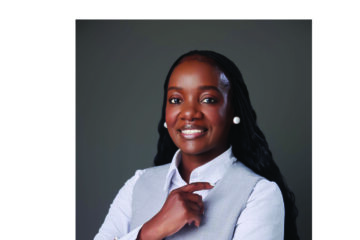As we reach day 3-4 in our national lockdown, one of the logistical ‘gaps’ to emerge is the Namibian understanding of social spacing vs that of the world health officials who have made the global call for it.
While our government has been exposed as lacking in pre-planning, situational needs anticipation and implementation capacity to properly enforce the lockdown, at least they are trying. Though, protecting against a virus that can stay alive on surfaces for days and hang in the air for minutes, our kind of ‘trying’ is a weak link in the chain. What sense does it make to block thieves by installing a great new lock for the front door, only to leave the back door wide open? That said – one thing that slipped off the radar is educating the masses of the Namibian people, using their mother tongues, about what ‘social distancing’ is. Is there an Oshiwambo word for that? Damara? Silozi? We think not.
Social distancing, according to the World Health Organization website, is staying home (plan A); if you go out for food or medicines or essential work, stay 1-2 meters away from everyone. It is this latter point that presents a challenge for people in our society.
It is our view that most Africans do not have the same need for ‘personal space’ while in a crowd as western people. In a queue in London, there is about two shoe length’s distance between everyone standing there, no matter how long the line is. To them, that is ‘orderly.’ You’ll find the same in the US and other countries. Their sense of personal space is a part of their social fabric; it is learned behaviour. If you step ‘too close’, they will react negatively. The demand for Covid social spacing isn’t a big deal for societies like this.
In Namibia, personal space is an alien concept. In long or short queues, the people just behind you breathe right down your neck. It has always been that way. School kids are lined up in the morning for parade so close together that any movement bumps the person in front or behind them. This is learned behaviour that set the standard ‘in Namibia.
The international instructions about how to manage COVID, says that the first ‘must do’ is social spacing. The Namibian culture makes that a challenge. Government must find a way to quickly discourage queues with people slammed together. Cultural traditions have to be placed on hold. For example, the mourners of the recent victims of a terrible car accident must not go to the house to console the family as culture dictates. This is hard for Namibians, but it is the COVID reality.
On the very first day of the Namibian style of lockdown, it was business as usual in the long lines for services. In one event in Katutura, people flocked to buy water recharge vouchers. The hundreds in the crowd stood in the usual long lines. Each had their face nearly in the back of the head of the person in front. No one had the slightest idea that something was wrong.
Covid or not, close quarters in queues, at school, funerals or in shops, is normal in Namibia. This must change in an instant and that is where the challenge lies.
This is happening in week one, what about next week and the one after that?




